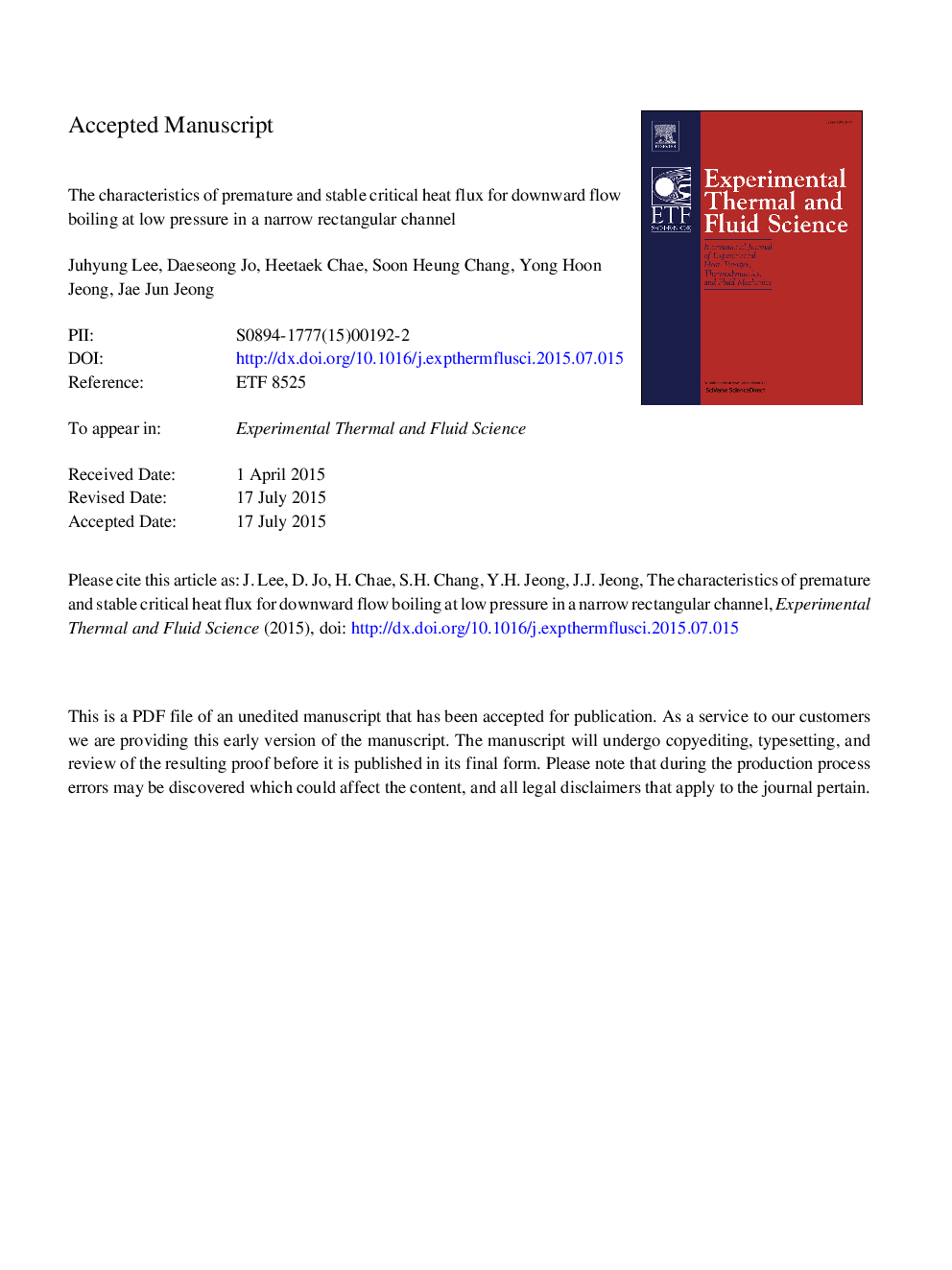| Article ID | Journal | Published Year | Pages | File Type |
|---|---|---|---|---|
| 7052121 | Experimental Thermal and Fluid Science | 2015 | 43 Pages |
Abstract
Flow instability and critical heat flux (CHF) especially for downward flow of water in a vertical narrow rectangular channel heated from both sides were experimentally investigated. The gap, width, heated width, and heated length of the channel were 2.35, 40, 30, and 350 mm, respectively. The flow boiling was developed as the wall heat flux was increased for the imposed mass flux of 500 and 1000 kg mâ2 sâ1 for high inlet subcooling (52-74 K) conditions under atmospheric pressure. In this paper, the unstable boiling flow was investigated by monitoring the channel pressure drop and high speed visualization for side view of boiling (HSV-SVB) with the back-lighting method. The results showed that an irremovable pressure drop fluctuation was involved in the flow boiling after the distinct initiating point called as the onset of pressure drop fluctuation (OPDF). We determined that coalescence of bubble (or vapor) layers on opposing heated surfaces triggered the OPDF, since an abrupt increase of pressure drop was occurred as the expansion of the liquid-vapor interface became bounded by the other layer on the opposite side. The fluctuation was amplified as the exit quality was increased and the flow regime passed through the unstable slug or churn flow. For a low inlet throttling condition, premature CHF was induced at the maximum fluctuation during those flow regimes. On the other hand, stable CHF was obtained in the re-stabilized flow regime as the annular flow was developed only for large inlet throttling conditions with an additional pressure drop across the valve of more than 0.4 bar for our experimental configuration.
Related Topics
Physical Sciences and Engineering
Chemical Engineering
Fluid Flow and Transfer Processes
Authors
Juhyung Lee, Daeseong Jo, Heetaek Chae, Soon Heung Chang, Yong Hoon Jeong, Jae Jun Jeong,
